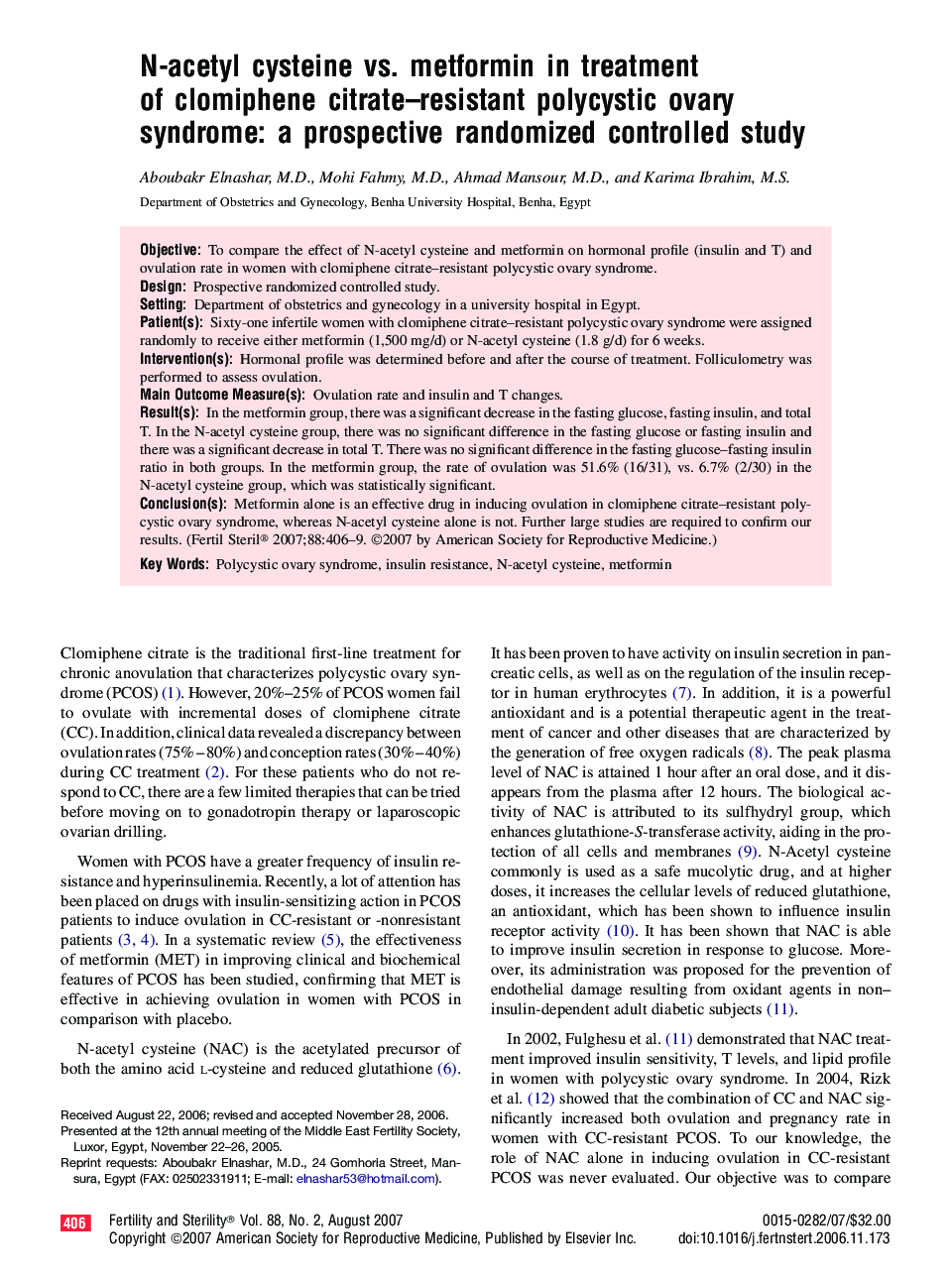| Article ID | Journal | Published Year | Pages | File Type |
|---|---|---|---|---|
| 3935507 | Fertility and Sterility | 2007 | 4 Pages |
ObjectiveTo compare the effect of N-acetyl cysteine and metformin on hormonal profile (insulin and T) and ovulation rate in women with clomiphene citrate–resistant polycystic ovary syndrome.DesignProspective randomized controlled study.SettingDepartment of obstetrics and gynecology in a university hospital in Egypt.Patient(s)Sixty-one infertile women with clomiphene citrate–resistant polycystic ovary syndrome were assigned randomly to receive either metformin (1,500 mg/d) or N-acetyl cysteine (1.8 g/d) for 6 weeks.Intervention(s)Hormonal profile was determined before and after the course of treatment. Folliculometry was performed to assess ovulation.Main Outcome Measure(s)Ovulation rate and insulin and T changes.Result(s)In the metformin group, there was a significant decrease in the fasting glucose, fasting insulin, and total T. In the N-acetyl cysteine group, there was no significant difference in the fasting glucose or fasting insulin and there was a significant decrease in total T. There was no significant difference in the fasting glucose–fasting insulin ratio in both groups. In the metformin group, the rate of ovulation was 51.6% (16/31), vs. 6.7% (2/30) in the N-acetyl cysteine group, which was statistically significant.Conclusion(s)Metformin alone is an effective drug in inducing ovulation in clomiphene citrate–resistant polycystic ovary syndrome, whereas N-acetyl cysteine alone is not. Further large studies are required to confirm our results.
